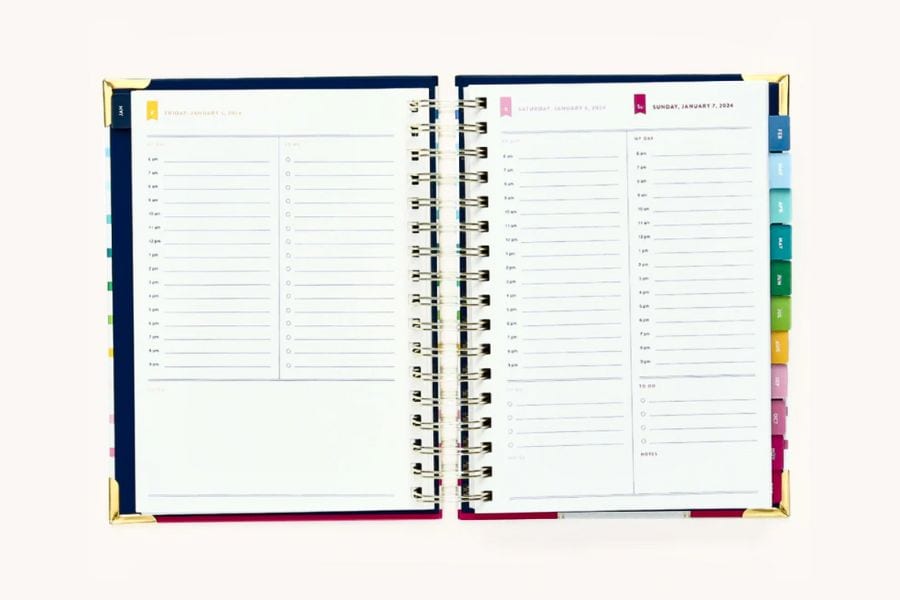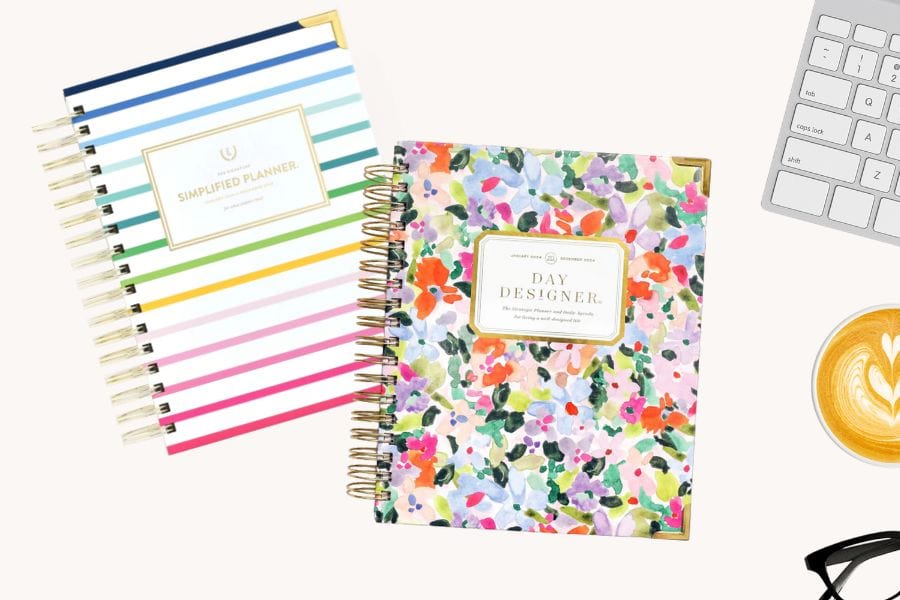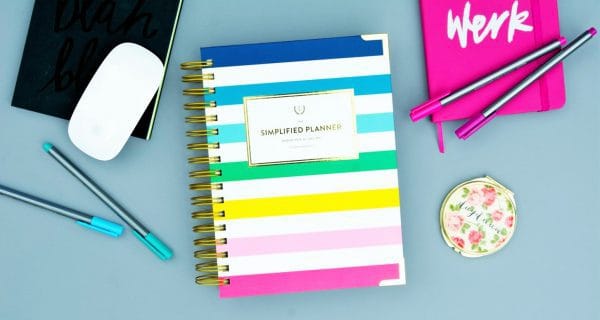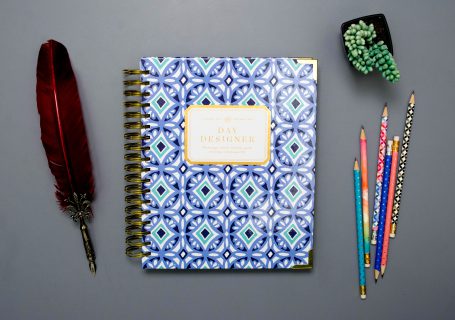The Simplified Planner vs. Day Designer: Which Planner is Right for You?

The battle for the best daily planner is on! In the left corner, measuring in at 6″ x 8.75″, we have The Simplified Planner by Emily Ley, and in the right corner, measuring in at 7.3″ x 9.5″, is Day Designer by Whitney English. They’re duking it out so you can determine which one is right for you in terms of features, price, quality, and usefulness. Now let’s get ready to rumble!
Round One: Daily Layouts

The daily page in both planners is divided into two columns. In Day Designer, the left column has the day’s top three priorities, schedule, and notes box, and the right column has the four D’s (Due, Dinner, Dollars, and Don’t Forget), extended to-do list, and daily gratitude box. Every inch of the daily layout inside DD is utilized for a specific purpose.
In comparison, the daily layout of The Simplified Planner is, well, much simpler. The left column only has the Schedule and the right column has the To-Do section. Under both sections is the Notes box. There’s more white space inside The Simplified Planner, but the schedule is one hour shorter. DD starts at 5 a.m., and TSP starts at 6 a.m. The to-do lists also differ. TSP has 16 slots for daily tasks, and DD has 17 slots for regular to-dos, plus the Top Three tasks above the daily schedule, which gives you a total of 20 to-dos.

TSP makes up for that in the Notes section. The Notes section takes up over a quarter of the page, so you have a significant amount of room to write down various things, like how much money you’ve spent, everything you need to make for dinner, or even track all your meals, water intake, or workouts. Then you have DD’s Notes section. It’s not small compared to most planners, but it is much smaller than TSP’s Notes box. However, DD gives you more specific prompts to work with instead of an open-ended Notes catch-all. So really, it’s all about what you prefer.
Winner of Round One: Day Designer
Why: Longer schedule and more to-do slots.
Round Two: Weekend Pages

The weekend pages are where TSP and DD really start to showcase their differences. Each one does a shared layout, so half of the page is for Saturday and half is for Sunday, but they do so in very different ways. In Day Designer, the weekend pages are split into vertical columns. Above each daily numbered list is space for three daily tasks, and below is a weekly overview for the week to come, which gives you a space to see what major things are happening each day.

The Simplified Planner splits the shared weekend pages vertically as well. Each day is then divided into a blank lined space, scheduled starting at 6 a.m., a four-item to-do list, and a small notes section. The scheduled times help you keep track of your day, while the to-do section can be used to write down events or places you need to be. The notes section can be used for general notes, intentions, or thoughts. The to-do list on Sunday is meant to help you get everything in order for the following week, like cleaning, cooking, plans, and any other kind of preparation.
Winner of Round Two: The Simplified Planner
Why: The scheduled time slots and to-do and notes section.
Round Three: Physical Attributes
Day Designer and The Simplified Planner look a lot alike at a glance. Both have gold wire-o binding, gold corners on the covers, high-quality paper, easy-to-find tabs, and bright, colorful cover designs. However, they do have a couple of differences.
First, TSP has fewer cover options than DD. Each company has a classic design you find each season and then limited editions that are only available once. Day Designer has more classic designs and limited editions than The Simplified Planner, though.

Day Designer is also a bigger planner, which can be a good and bad thing. It’s good because there’s more space for you to write, but it’s also heavier to carry around. The Simplified Planner is smaller and easier to carry around in a purse or backpack for longer periods of time.
Winner of Round Three: Draw
Why: Each is of comparable strength, quality, and beauty.
Bonus Round: Bonus Features
There’s a reason Emily Ley named her planner The Simplified Planner; it’s straightforward and doesn’t have a lot of extraneous details or pages. There are no goal-setting pages, fitness/diet tracking, or anything like that. There are just the daily pages, monthly calendar, and some note pages.
Day Designer, however, is all about goal setting and tracking. Inside, you have four pages devoted to your goals so you can stay on top of them and make sure you’re making progress. For a goal junkie, it’s paradise.
Winner of the Bonus Round: Day Designer
Why: There are bonus features, duh.
When it comes to a TKO, neither Day Designer nor The Simplified Planner has the upper hand. If you need more free space, then The Simplified Planner is the one for you. But if you like for there to be a place for everything, then Day Designer has you covered. The goal-setting pages give Day Designer a bit of an edge, but they aren’t enough to secure a solid win. The final winner of the match depends on what you need from a planner, what size you prefer, and which covers you find most appealing. No matter what you choose, you can’t really go wrong.
*Updated December 18, 2023.
Last modified on January 8th, 2024






Show Comments +